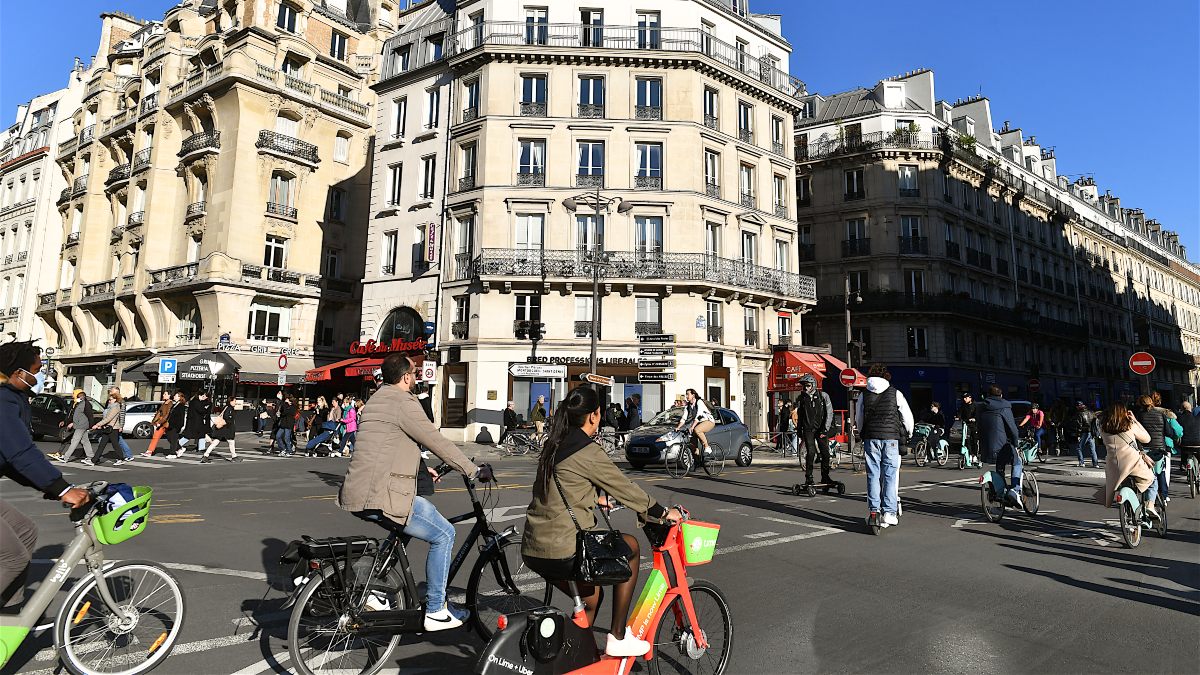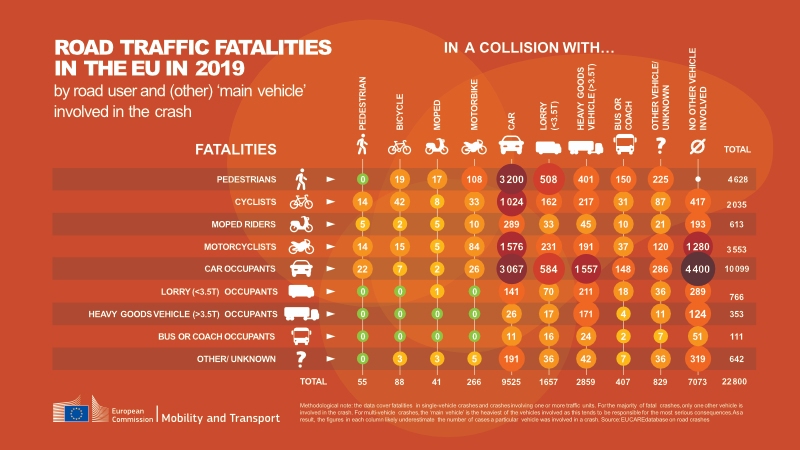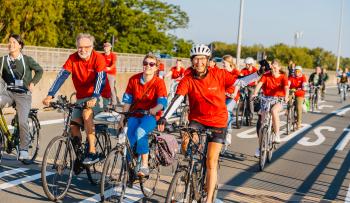
Road safety: Fewer EU road deaths, but most fatal crashes still include cars
European Commission reports fewer EU road deaths in 2020 compared to previous year, proving that more active mobility increases road safety. However, motorised transport is still hugely overrepresented in fatal crashes across all road-user groups.
The European Commission has published its latest road safety figures for 2020. According to the report, there were around 3,900 fewer road deaths in the European Union in 2020 compared to 2019.
While these figures are to be celebrated given that we have less people dying on our roads, it is important to recognise that a significant reason for this reduction could be due to the impacts of the COVID-19 pandemic. Lockdown and travel restrictions have undoubtedly skewed these figures, whilst also making any analysis increasingly difficult.
Interestingly, the Commission has also published a “Collision Matrix” which looks not only at the number of deaths on the roads but also who is colliding with who. These numbers are from 2019 and therefore are not impacted by the pandemic.

Graphic 1: “Collision Matrix” of road traffic fatalities in EU in 2019 (Source: EU Commission)
The results, which show no surprises, paint a chilling picture: motorised transport is hugely overrepresented in fatal crashes across all user groups. People are much more likely to die in crashes that include a car. When we look at road safety across the EU, what we really should be looking at is how to reduce the fatal impact of motorised vehicles on other modes of transport.
Cycling and walking are often seen as a “safety problem,” and cyclists and pedestrians as “Vulnerable Road Users.” However, when figures and graphics such as the one shown above are released, it becomes increasingly clear that the problem is not with risky cyclists and pedestrians but rather with dangerous motorised vehicles.
Rather than seeing active transport as a problem to be solved, policy- and decisionmakers need to see modal shift as a road safety solution. A shift towards active mobility will not only bring climate and health benefits but also calmer, safer roads with less mass and energy on them, and fewer fatalities.
Wanted: More and better infrastructure
Of course, there are still cycling safety issues. Single bicycle crashes may become more frequent with an increase in cycling numbers, as could crashes between pedestrians and cyclists, but this only strengthens the call for more and better infrastructure. By happy coincidence, the way to improve safety for the increasing number of cyclists is also the way to help achieve modal shift through comfortable, easy-to-use and well-maintained infrastructure.
There are other obvious benefits to cycling. The European Cyclists’ Federation (ECF) estimates that current levels of cycling produce benefits of €150 billion per year for EU member states. More than €90 billion of these benefits are positive externalities for the environment, public health and the mobility system.
In comparison, a recent study by the European Commission estimated the negative externalities – ie the costs for the environment, health and mobility – of motorised road transport at €800 billion per year, with only around half recouped in charges and taxes, leaving a shortfall of around €400 million for taxpayers to pick up the tab.
Therefore, modal shift to cycling must be seen as a major tool to overcome the problems that we associate with especially our urban areas today. Cycling contributes to improved air quality, less congestion, better health from activity and reduced CO2 emission. We also see that modal shift to active modes can improve road safety, but only if there is good quality infrastructure and facilities for cyclists.
More and better cycling infrastructure will provide not only the safety needed to increase cycling numbers significantly but also a way of overcoming the barriers that too often stand in the way of people getting out of their cars and onto their bikes.
Regions:
Contact the author
Recent news!
Upcoming events
Contact Us
Avenue des Arts, 7-8
Postal address: Rue de la Charité, 22
1210 Brussels, Belgium









